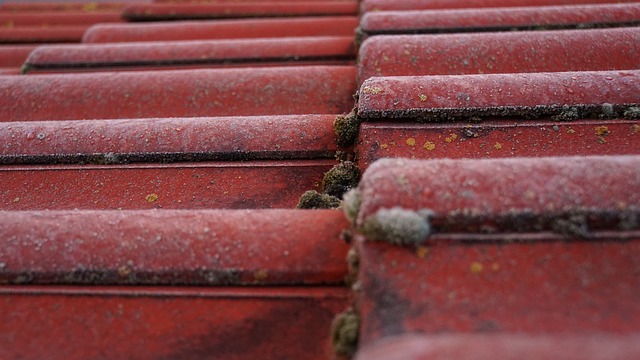Austin's extreme humidity and hot summers require proper roof ventilation to prevent moisture-related damage. Issues like mold growth, wood rot, and structural problems can be detected through regular inspections. Leaks often stem from inadequate ventilation, which can be resolved by clearing vents and enhancing airflow with additional systems. Tailored ventilation solutions involving ridge and under eave vents ensure optimal temperature regulation and prolong the lifespan of Austin roofs.
In Austin, where extreme weather can take a toll on your home, proper roof ventilation is crucial. This article guides you through the essential aspects of roof ventilation, addressing common issues plaguing local homes. We explore how inadequate ventilation leads to moisture buildup and leaks, offering practical solutions for repairs and long-term prevention. Discover expert tips on fixing leaks, implementing effective ventilation systems, and maintaining a dry, healthy Austin roof.
- Understanding Roof Ventilation and Its Importance in Austin Weather
- Identifying Common Roof Ventilation Issues in Austin Homes
- How to Fix Leaks Caused by Inadequate Ventilation
- Implementing Effective Ventilation Solutions for Your Austin Roof
- Preventing Moisture Buildup: Long-Term Strategies for Austin Roof Repair
Understanding Roof Ventilation and Its Importance in Austin Weather

Roof ventilation plays a crucial role in maintaining a healthy and comfortable living space in Austin’s unique climate. With hot, humid summers and mild winters, proper ventilation is essential to prevent moisture buildup. This is where Austin roof repair comes into play—ensuring your roof is equipped with adequate ventilation systems.
In simple terms, roof ventilation allows for the movement of air across the ceiling and under the roof decking, helping to regulate indoor temperature and reduce humidity levels. Proper ventilation can prevent the formation of condensation, which could lead to mold growth and structural damage over time. Austin’s weather patterns often bring high humidity, making timely intervention through austin roof repair critical to maintaining a well-ventilated home.
Identifying Common Roof Ventilation Issues in Austin Homes

In Austin homes, common roof ventilation issues often stem from inadequate or blocked ventilation systems. This can be due to various factors, including poor initial installation, damage from weather events like strong winds and storms, or simply neglect over time. Without proper ventilation, moisture can build up within the roof cavity, leading to serious problems such as mold growth, wood rot, and structural damage.
One of the primary signs of roof ventilation issues is an unusually damp or musty smell indoors, especially during humid Austin summers. Other indicators include visible water stains on ceilings or walls, peeling paint, and warped flooring. Regular inspections can help homeowners identify these problems early on, making it easier to address them with effective austin roof repair solutions before they escalate.
How to Fix Leaks Caused by Inadequate Ventilation

Leaks in your Austin roof can be a common issue, often stemming from inadequate ventilation. This happens when there’s insufficient airflow through the attic space, leading to moisture buildup and subsequent leaks. To fix this problem, start by inspecting the vents and ensuring they’re clear of obstructions like leaves or debris. Proper ventilation includes both intake and exhaust systems; make sure these are functioning optimally.
If the leak persists, consider enhancing your roof’s ventilation. This could involve installing additional vents or modifying existing ones to allow better airflow. For Austin roof repair, consult with professionals who can assess and implement effective solutions tailored to your specific roof structure and climate conditions.
Implementing Effective Ventilation Solutions for Your Austin Roof

Implementing effective ventilation solutions is crucial for maintaining a healthy Austin roof. Proper ventilation helps regulate temperature, reduces moisture buildup, and prevents the accumulation of debris like leaves, branches, or snow. For Austin roof repair, consider incorporating ridge vents, under eave vents, or both to ensure optimal airflow. Ridge vents, placed at the peak of your roof, allow hot air to escape while drawing in fresh, cooler air from the bottom. Under eave vents, installed near the roof’s edge, facilitate continuous air flow and help keep the roofing materials dry. By integrating these systems, you mitigate the risk of mold growth, wood rot, and other damage caused by excessive moisture.
Preventing Moisture Buildup: Long-Term Strategies for Austin Roof Repair

Moisture buildup on roofs is a common problem in Austin, due to the city’s unique climate and potential for extreme weather events. Preventing this issue requires a multifaceted approach that goes beyond quick fixes. For effective Austin roof repair, homeowners and professionals alike should consider long-term strategies to ensure optimal roof health.
Regular inspections are key to identifying potential problems early on. By keeping an eye out for signs of moisture intrusion, such as discolored or peeling shingles, dampness in the attic, or the presence of mold, you can take proactive measures. Additionally, improving ventilation and ensuring proper drainage systems are in place play a significant role in preventing moisture buildup. These strategies not only extend the lifespan of your roof but also contribute to a healthier living environment within your Austin home.
In conclusion, addressing roof ventilation issues is paramount for Austin homeowners to safeguard their properties from moisture-related damage. By understanding common problems and implementing effective solutions, such as fixing leaks, enhancing ventilation, and employing long-term preventive strategies, you can ensure a dry, healthy, and durable roof for your Austin home. Prioritizing regular maintenance and timely repairs through professional austin roof repair services will contribute to the overall longevity of your residence’s most crucial protective barrier against the elements.
